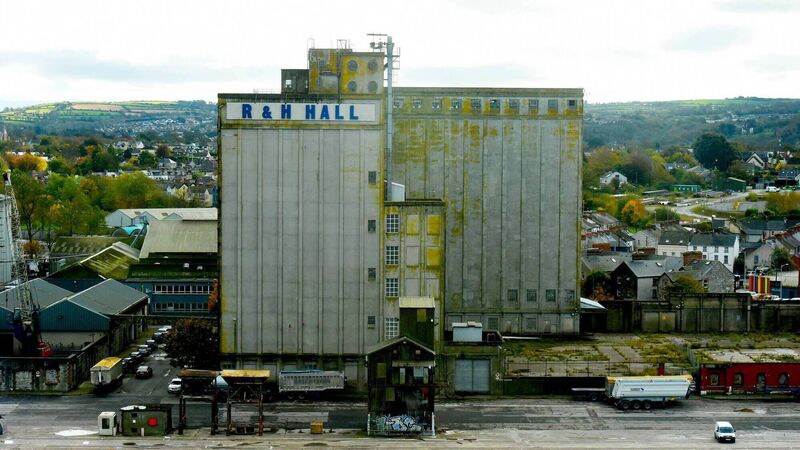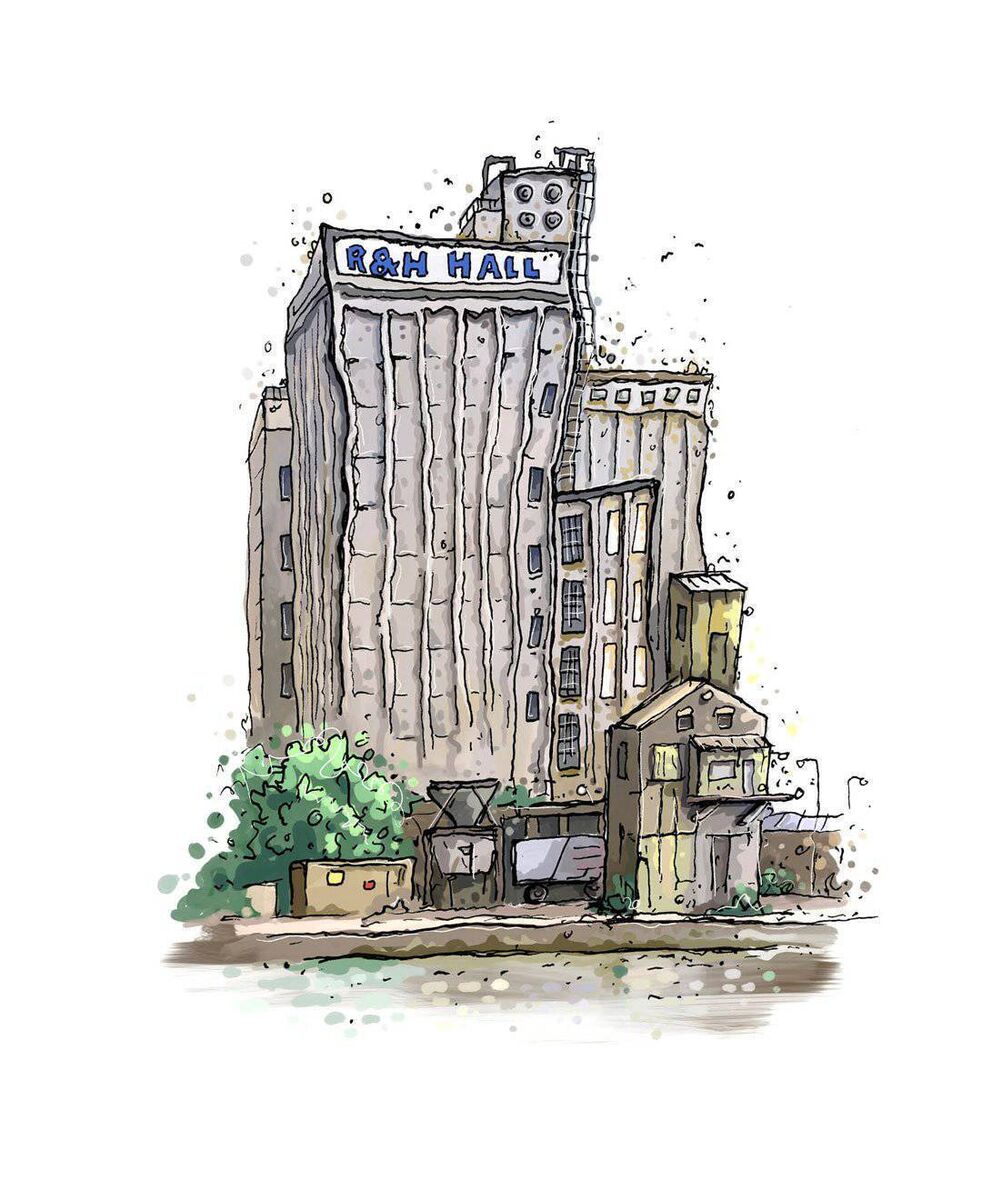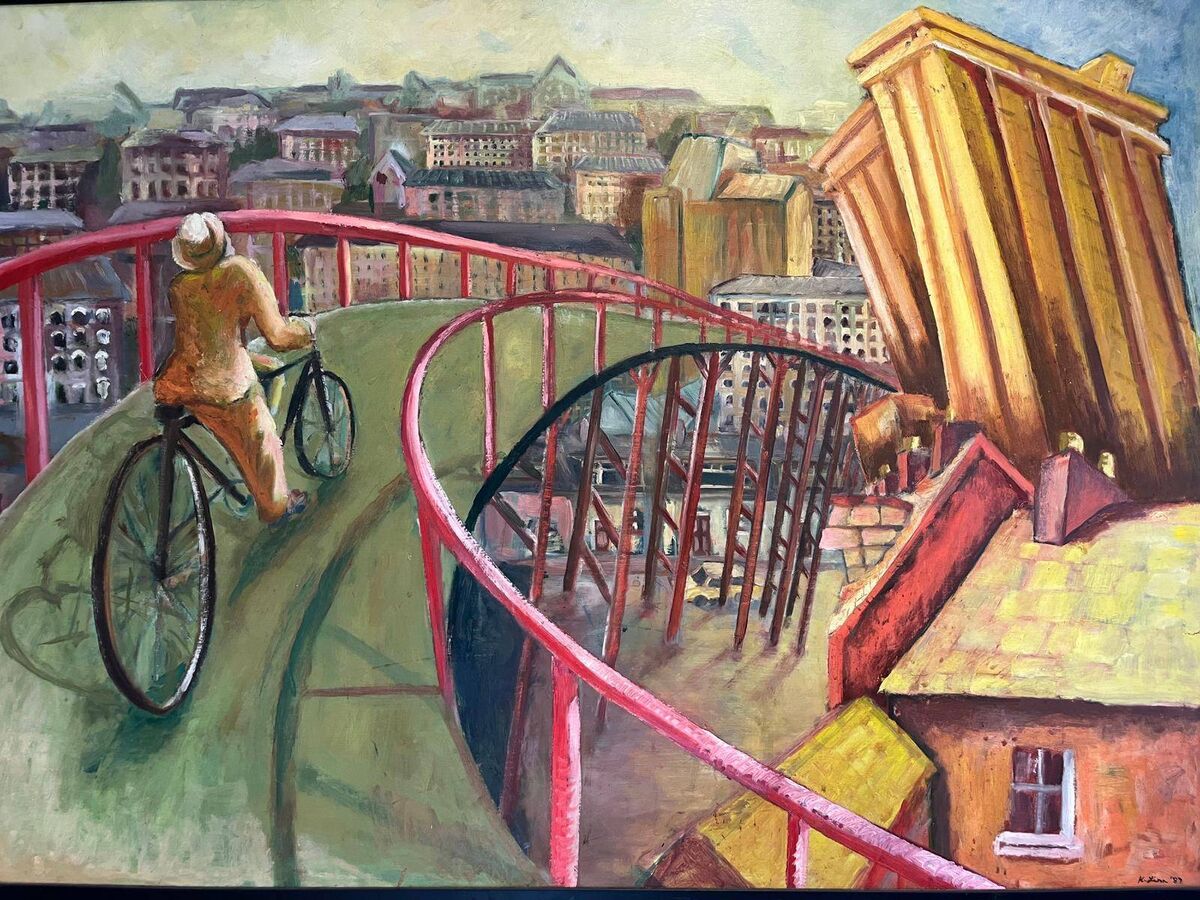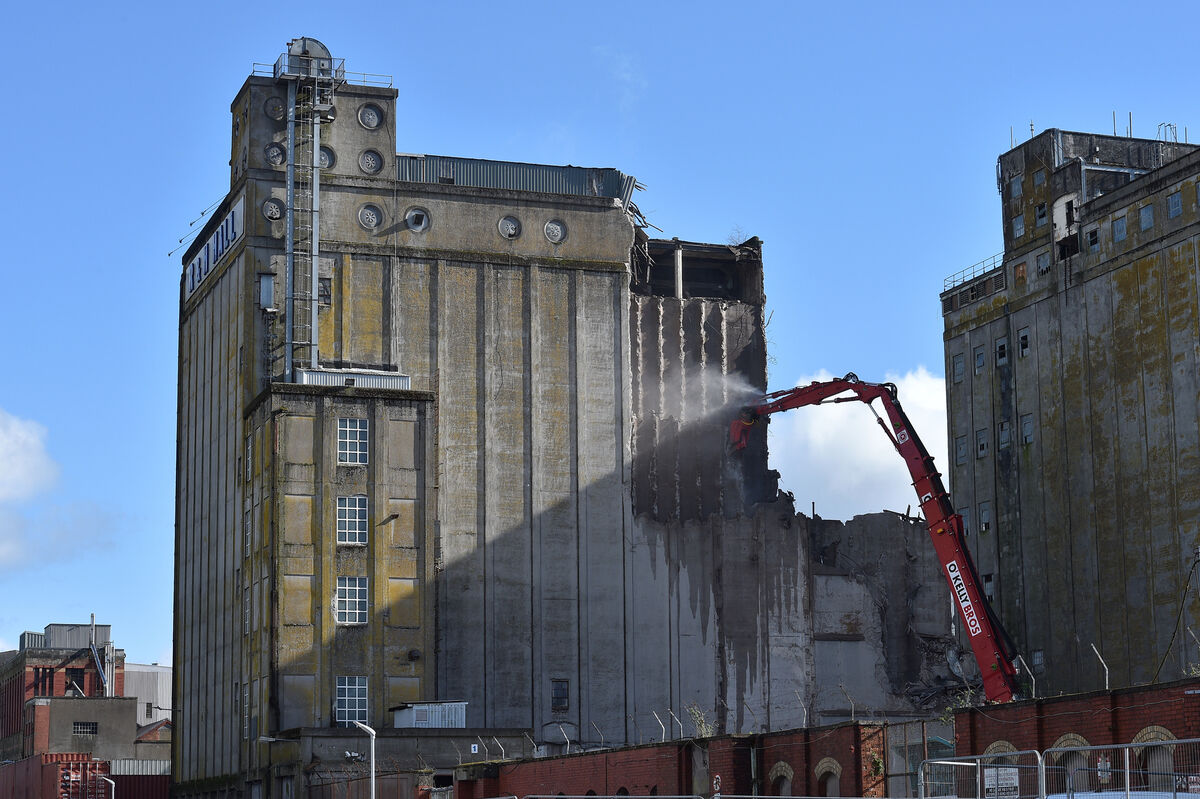R&H Hall: A building that loomed large in Cork artists' imaginations

The former R&H Hall building in Cork continues to inspire local artists even after its demolition. Picture: Larry Cummins
No sooner is she down than she’s being celebrated - and missed. The “she” in question is the recently demolished R&H hall grainstore on Cork’s South Docks. Even though most vertically ambitious buildings are considered male, R&H Hall always seemed female to me – a big, blowsy mother ship.
The two silo towers on the site were built in 1934 and 1954, respectively, and they loomed over the docklands for over 80 years, most of them working, though in the past two decades they have been empty and heading towards dereliction. The demolition work started in January and it’s taken over four months to bring the mighty Amazons down.
The giant towers stood at 33m (for comparison’s sake, the Elysian tower, Cork’s tallest building is 71m) and were made of concrete and steel, with metal windows along the lower levels. This mode of construction was celebrated at the time but for most people it was the sheer size of the R&H Hall structures that impressed – or repelled.
The National Built Heritage Service noted that beyond its “utilitarian design”, the architectural significance of the grain mills lay in its visibility from many parts of the city, its height and scale serving to define the commercial docks area of the city.
The building has always divided public opinion. For some “majestic”; for others “an abomination”. For some a fondly regarded landmark, for others an eyesore – though one Cork resident interviewed as the towers were being dismantled conceded that “at least, it was our eyesore”. For the residents of Park View, the terrace situated right beside the site, the silo towers must have been brooding shadow-makers, greedy light-stealers.
A child who was interviewed during the demolition saw Willy Wonka’s Chocolate Factory. And it’s not just children who projected their imagination onto the building. Local artist, Jason O’Gorman remembers being able to see the structure from his house on the northside as a child.

“Lying in my bed, I wondered if the R and H stood for 'Really High'," says O'Gorman. "What exactly was this hulk of concrete and steel towering over the city? Was it home to some dark experimental project or was it Batman's secret lair? By the time I was old enough to find out it was just a grain silo, it was too late - my imagination had already fired.”
Signs on, O’Gorman’s work features images of mega monsters and dinosaurs dwarfing the monolithic building. He’s not the only one. It’s a site that has always excited the artistic imagination - there have been postcards, photographs, graphic prints and posters made of the Old Lady of Kennedy Quay. O’Gorman is one of 15 artists whose work is featured in an exhibition dedicated to the building, which opened at the Marina Market at the end of April before the dust had settled on the demolition site.
A few decades before, in the 1980s, aspiring local artist Kieran Finn had also been inspired by the building. “Growing up in Marina Terrace in the Albert Road area (‘Jewtown’) the landscape was dominated by gasometers at one side of me and the R&H Hall building on the other. I could see it from my bedroom window. During my time in the Crawford Art College I painted the building many times and often used it as a motif in the cityscapes I created, both real and abstract,” recalls Finn.

The downing of this landmark building (love it or hate it) was a slow business. Behind the high walls, the giraffe neck of a huge crane with toothed jaws crunched its way through the walls with what seemed like carnivorous glee. It seemed an oddly laborious way to get rid of the place, but in the end as a fan, it gave me a chance to get used to the idea that soon there would be a blue sky view when sitting having a drink in my local, Goldbergs.
I’d imagined at first that they might blow her up and I rather liked the idea of her coming down in one explosive fell swoop. It’s not something you see every day, though in pre-September 11 America, the controlled demolition of buildings was often turned into a spectator event.
In Richard Ford’s novel , set in the year 2000, the aging hero Frank Bascombe and his buddies go on an expedition to watch the downing of an old hotel in Asbury Park on the New Jersey shore. In reality, the hotel still stands, but in the novel. Ford renames it and then tears it down by implosion.
“Black smoke gushes from what must be the hotel’s deepest subterranean underpinnings, her staunchest support... Her longitude lines, rows of square windows in previously perfect vertical alignment, all go wrinkled, as if the whole idea of the building had sustained, then sought to shrug off a profound insult... and then rather simply, all the way down she comes, more like a brick curtain being lowered than like a proud old building being killed. Eighteen seconds is about it.”
After reading this, I’m glad that R&H Hall went the slow way. It gave me time to adjust to her loss, and a chance to glimpse her complicated innards and to marvel at just how ambitious a building she was. My only regret was that I had to wait for her to be destroyed to get a glimpse inside.

One person who had a bird’s eye view of the interior is Flor Hurley, an archaeologist specialising in industrial and built heritage, who was part of a team commissioned by the Historic Building Survey Unit to photograph and map the interior. Ugly or not, R&H Hall was considered to have heritage value.
“I suppose you could call it ‘grimy industrial’,” Flor says, describing the atmosphere as a good location for a futuristic sci-fi film. There were 108 grain silos between the two buildings, through which thousands of tonnes of grain were processed annually. These silos formed a honeycomb inside, he says, and the floor area contained a maze of passageways between four-floor-high grain dryers and conditioners, cyclone fans and grain hoppers. “The place was in surprisingly good condition given that it had been idle for 20 years.”
There was the occasional aggravated clatter of wings where pigeons, the only remaining tenants, were disturbed by the team’s work. It was mostly grey and dark inside, though the internal stairwells (the lifts being long out of commission) were painted a lime green. One fascinating discovery was a small wire cage – designed for a very small, thin man, Hurley says – operated by a hand crank which was lowered into the silos so they could be inspected. Not a job for the claustrophobic!
Hurley’s team saved examples of all the processing machinery and these are being stored and preserved for future use – in an on-site museum, or to be incorporated into a sculptural art piece. Which is almost where we came in.
The R&H may be gone, but it lives on in the imagination.
- Mary Morrissy is a novelist and short story writer. Her most recent publication is in (Doire Press), a collection of short fiction from and about Cork



